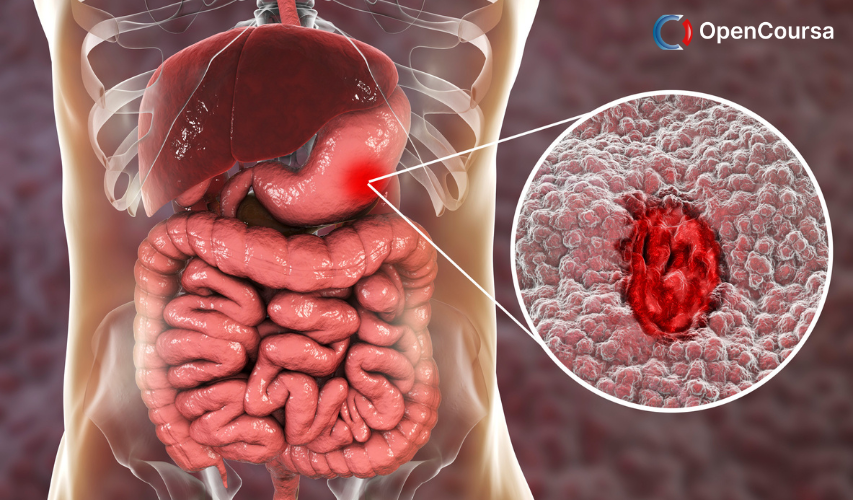Home » Course Layouts » Free Course Layout Udemy
Portable, bench or floor mounted power tools and equipment need routine maintenance, inspection and adjustments to ensure safe operation. Tool bits, blades and other changeable parts must be kept sharp and free from damage. Electrical systems, belts & pulleys and gears must be properly guarded to prevent exposing employees to hazards.
0
29
English
English [CC]
COMING SOON
#course_button_679 .course_button.button,#course_button_679 input[type="submit"]{
display: flex;flex-wrap:wrap;align-items: center;justify-content: center;padding: 0 10px!important;
} #course_button_679 .course_button.button>a{color:#fff;justify-content: space-around;}
#course_price{display:none;}#course_price:checked+label+.wplms_price_dropdown{display:flex;}.wplms_price_dropdown {
display:none;position: absolute;top: 100%;width: 100%;
background: var(--highlight);box-shadow: 0px 2px 4px var(--shadow);
color: var(--text);flex-direction: column;
left: 0;padding: 0.5rem 0;}
.course_button.full.button a {
flex: 1;display:flex;flex-wrap:wrap;
}
.course_button.full.button .amount {
color: var(--text) !important;
}.course_button_wrapper.fix .wplms_price_dropdown{top: auto;bottom: 100%;box-shadow: 0px -2px 4px var(--shadow)}
.wplms_price_dropdown>a {
padding: 0.5rem 1rem;
}
.wplms_price_dropdown > a+a {
border-top: 1px dashed var(--border);
}.course_button .extra_details{display: flex;font-size: 0.8rem;width: 100%;justify-content: space-between;}.course_button .extra_details>span{flex:1;}
.the_course_button.is-loading{opacity:0.5}
What you'll learn
Course content
Reviews
Instructors
Learn basic syntax that can apply to any language.
Learn what is a programming language and the basic concepts for beginners.
Understand what is Javascript in it's truest form.
Know the basic syntax of Javascript.
Know some hidden quirks in Javascript.
Description
Hand Tool Safety
Hand tools are non-powered. They include anything from axes to wrenches. The greatest hazards posed by hand tools result from misuse and improper maintenance.
Appropriate personal protective equipment such as safety goggles, gloves, etc., should be worn due to hazards that may be encountered while using portable power tools and hand tools.
Around flammable substances, sparks produced by iron and steel hand tools can be a dangerous ignition source. Where this hazard exists, spark-resistant tools made from brass, plastic, aluminum, or wood will provide for safety.
Power Tool Precautions
Equipment. Make sure you know how to use any video equipment or that someone else is available to do so.
Power tools can be hazardous when improperly used. There are several types of power tools, based on the power source they use: electric, pneumatic, liquid fuel, hydraulic, and powder-actuated.
• Never carry a tool by the cord or hose.
• Never yank the cord or the hose to disconnect it from the receptacle.
• Keep cords and hoses away from heat, oil, and sharp edges.
• Disconnect tools when not in use, before servicing, and when changing accessories such as blades, bits and cutters.
• All observers should be kept at a safe distance away from the work area.
• Secure work with clamps or a vise, freeing both hands to operate the tool.
• Avoid accidental starting. The worker should not hold a finger on the switch button while carrying a plugged-in tool.
• Tools should be maintained with care. They should be kept sharp and clean for the best performance. Follow instructions in the user's manual for lubricating and changing accessories.
• Be sure to keep good footing and maintain good balance.
Almost every employee uses some type of tool during the day to accomplish tasks. Whether it’s a screwdriver or jack hammer, your role as a supervisor is to ensure, that the tools used for each job, are the right tool for that job. This includes making sure tools are used safely and are in good working condition.
Power Tool Safety
Tools may be powered by electricity, compressed air, hydraulics, belts or chain drives. Power used by tools to do work can possess a tremendous amount of energy that must be controlled by the worker using the tool. Hazards from tool power sources affect not only the person using it but also to those working close by.
Keep it Sharp
Whether a power tool or a hand tool, if it’s designed to cut, keeping the cutting edge sharp is a safety priority. Sharp tools work better and require less force. When sharpening, adjusting or changing a blade, bit or cutting edge, ensure your workers disconnect the tool from the power source by unplugging electrical cords or removing hoses.
Bits, blades and cutting tool edges should be covered while on the shelf or in the toolbox. This not only helps keep the cutting edge from becoming dull, it also prevents hand injuries when a worker reaches for the cutting tool.
Check adjustments
If there are any adjustable parts of a tool, they will most likely be “unadjusted” when a worker needs the tool. Train your people to check all adjustments before using the tool.
Check for damage
Look at handles, tool edges, power cords, hoses & connections, switches, triggers, casings, and attachments. Check hand tools for cracks dings and chips. Don’t use damaged tools. Generally, hand tools can not be repaired and should be thrown away. Power tools should not be jury-rigged to work. Have repairs made only by someone who knows the tool repair craft.
Personal Protective Equipment
Almost all hand or power tool use requires wearing eye protection. If dust, fumes or mists are produced, the proper respirator must also be worn. Using gloves with powered equipment may be a hazard if there is a chance of the glove material getting caught in the equipment or material being worked.
Clothing Hazards
Long draping sleeves, baggy shirts, floppy pant legs are hazardous around powered equipment. Long hair should be pulled back so that it does not hang in front of the ears. All personal jewelry such as rings, necklaces and pendants should be removed before operating powered tools or equipment.
Course content
document.addEventListener('DOMContentLoaded',function(){
if(document.querySelector('.the_course_button .course_button')){
document.querySelectorAll('.course_curriculum .item_title a:not(.curriculum_unit_popup)').forEach(function(el){
el.addEventListener('click',function(){
document.querySelector('.the_course_button .course_button').click();
});
});
}
});
.course_curriculum .course_section {
padding: 1rem 0;
}
.course_curriculum .course_section > td {
border: none;
padding: 1rem 0;
}
.course_curriculum .unit_description {
display: none;
padding: 1rem;
font-size: 14px;
border: none;
border: 1px solid var(--border);
border-top: none;
background: var(--border);
}
.course_curriculum .unit_description > td {
padding: 1rem;
}
.course_curriculum .course_lesson {
margin: 0;
padding: 1rem;
border: none;
border: 1px solid var(--border);
border-top:none;
position: relative;
display:flex;
gap:10px;
}
.course_curriculum .course_lesson .curriculum-icon > svg {
width: 1rem;
height: 1rem;
}
.course_curriculum .course_lesson span.free {
padding: 2px 8px;
border-radius: 2px;
background: var(--success);
color: #fff;
}
.course_curriculum .course_lesson span.time {
display:flex;
flex-direction: flex-end;
letter-spacing: 1px;
}
.course_curriculum .course_lesson span.time{
display:flex;
align-items:center;
gap:5px;
}
.course_curriculum .course_lesson span.unit_description_expander {
font-size: 10px;
}
.course_curriculum .course_lesson span.unit_description_expander:before {
content: "\e61a";
font-family: 'vicon';
}
.course_curriculum .course_lesson .curriculum_unit_popup {
display: block;
font-size: 10px;
cursor: pointer;
letter-spacing: 1px;
}
.course_curriculum.accordion .course_section {
margin: 0;
}
.course_curriculum.accordion .course_section > td {
position: relative;
}
.course_curriculum.accordion .course_section > td:after {
content: "\e61a";
font-family: 'vicon';
color: var(--border);
font-size: 24px;
position: absolute;
right: 0;
top: 10px;
}
.course_curriculum.accordion .course_section.show {
display: table !important;
width: 100%;
}
.course_curriculum.accordion .course_section.show > td:after {
content: "\e622";
}
.course_curriculum.accordion .course_lesson {
display: none;
}
.course_curriculum.accordion .course_lesson.show {
display: table !important;
width: 100%;
}
.course_curriculum ul{border-top:1px solid var(--border);}
.course_curriculum,.course_curriculum ul {
padding: 0;
list-style: none;
margin: 0;
}
.course_curriculum li {
padding: 0;
}
.course_curriculum input[type="checkbox"] {
display: none;
}
.course_curriculum li > ul li {
display: flex;
align-items: center;
padding: 10px;
}
.course_curriculum .item_title {
flex: 1;
}
.course_section label {
font-size: 1.4rem;
font-weight: 600;
}
N.A
0 ratings
5 stars04 stars03 stars02 stars01 stars0
No Reviews found for this course.
Instructor
OpenCoursa
Accessible Education for Everyone
5
5
6
24760
4637
We are an educational and skills marketplace to accommodate the needs of skills enhancement and free equal education across the globe to the millions. We are bringing courses and trainings every single day for our users. We welcome everyone woth all ages, all background to learn. There is so much available to learn and deliver to the people.
Explore Free Courses
Access valuable knowledge without any cost.
{"title":"","show_title":"0","post_type":"course","taxonomy":"course-cat","term":"engineering-skills,health-and-safety","post_ids":"","course_style":"free","featured_style":"course6","masonry":"","grid_columns":"clear4 col-md-3","column_width":"268","gutter":"30","grid_number":"4","infinite":"","pagination":"","grid_excerpt_length":"20","grid_link":"1","grid_search":"0","course_type":"","css_class":"","container_css":"","custom_css":""}
ul.grid{margin:0 -15px;}




